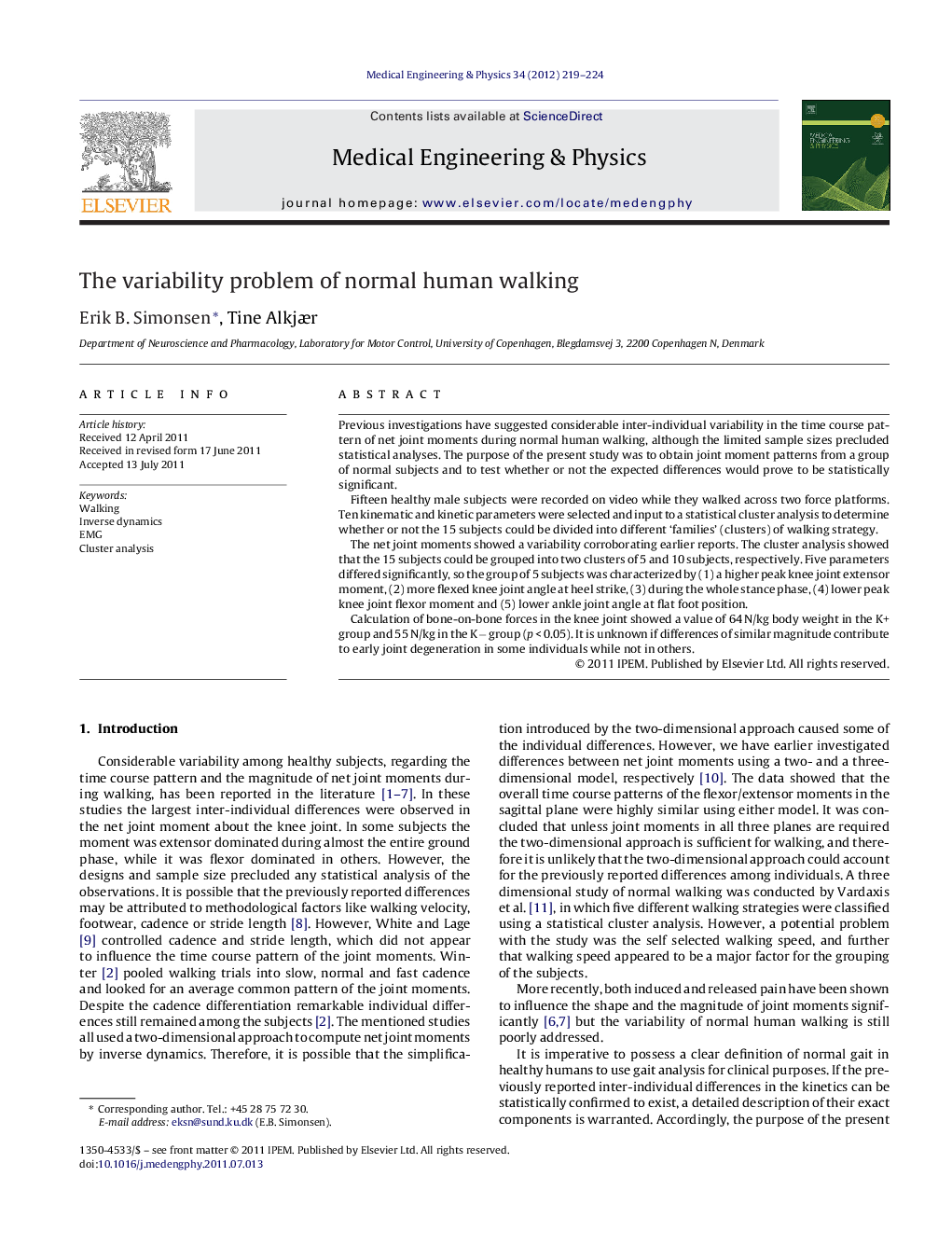| Article ID | Journal | Published Year | Pages | File Type |
|---|---|---|---|---|
| 876482 | Medical Engineering & Physics | 2012 | 6 Pages |
Previous investigations have suggested considerable inter-individual variability in the time course pattern of net joint moments during normal human walking, although the limited sample sizes precluded statistical analyses. The purpose of the present study was to obtain joint moment patterns from a group of normal subjects and to test whether or not the expected differences would prove to be statistically significant.Fifteen healthy male subjects were recorded on video while they walked across two force platforms. Ten kinematic and kinetic parameters were selected and input to a statistical cluster analysis to determine whether or not the 15 subjects could be divided into different ‘families’ (clusters) of walking strategy.The net joint moments showed a variability corroborating earlier reports. The cluster analysis showed that the 15 subjects could be grouped into two clusters of 5 and 10 subjects, respectively. Five parameters differed significantly, so the group of 5 subjects was characterized by (1) a higher peak knee joint extensor moment, (2) more flexed knee joint angle at heel strike, (3) during the whole stance phase, (4) lower peak knee joint flexor moment and (5) lower ankle joint angle at flat foot position.Calculation of bone-on-bone forces in the knee joint showed a value of 64 N/kg body weight in the K+ group and 55 N/kg in the K− group (p < 0.05). It is unknown if differences of similar magnitude contribute to early joint degeneration in some individuals while not in others.
